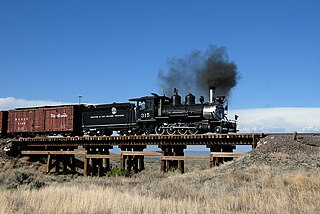
Conservation and restoration of rail vehicles aims to preserve historic rail vehicles.

The Halton County Radial Railway is a working museum of electric streetcars, other railway vehicles, buses and trolleybuses. It is operated by the Ontario Electric Railway Historical Association (OERHA). It is focused primarily on the history of the Toronto Transit Commission (TTC) and its predecessor, the Toronto Transportation Commission, Its collection includes PCC, Peter Witt, CLRV and ALRV, and earlier cars from the Toronto streetcar system as well as G-series and M-series Toronto subway cars.
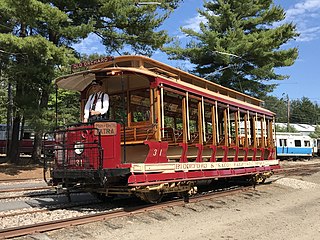
Seashore Trolley Museum, located in Kennebunkport, Maine, United States, is the world's first and largest museum of mass transit vehicles. While the main focus of the collection is trolley cars (trams), it also includes rapid transit trains, Interurban cars, trolley buses, and motor buses. The Seashore Trolley Museum is owned and operated by the New England Electric Railway Historical Society (NEERHS). Of the museum's collection of more than 350 vehicles, ten trolley, and railroad cars that historically operated in Maine were listed on the National Register of Historic Places in 1980, as Maine Trolley Cars.

The Connecticut Trolley Museum, founded in October 1940, is the oldest incorporated museum dedicated to electric railroading in the United States. The museum is located in East Windsor, Connecticut and is open to the public April through December. The museum features static and moving displays, and self-guided tours of the state's trolley history.

The Oregon Electric Railway Historical Society (OERHS) is a non-profit organization in the U.S. state of Oregon, founded in 1957. It owns and operates a railroad museum for electric railroad and streetcar enthusiasts, and also operates a separate heritage streetcar line, the Willamette Shore Trolley.

The Illinois Railway Museum is the largest railroad museum in the United States. It is located in the Chicago metropolitan area at 7000 Olson Road in Union, Illinois, 55 miles (89 km) northwest of downtown Chicago.

Streetcars in Washington, D.C. transported people across the city and region from 1862 until 1962.

The McKinney Avenue Transit Authority (MATA), a non-profit organization, operates the M-Line Trolley in Dallas, Texas. In operation since 1989, it is an example of a heritage streetcar running historic cars. The M-Line Trolley operates 7 days per week, 365 days per year. Since 2002, the M-Line Trolley is free to the public, thanks to donations and a joint operating subsidy received from Dallas Area Rapid Transit (DART) and the Uptown Improvement District. The main stretch of the line runs along McKinney Avenue in Uptown between West Village and Klyde Warren Park / Dallas Arts District. The M-Line Trolley connects to the DART light rail system at CityPlace/Uptown on the northern end and St. Paul on the southern end.

The Baltimore Streetcar Museum (BSM) is a 501(c)(3) nonprofit museum. It is located at 1911 Falls Road in Baltimore, Maryland. The museum is dedicated to preserving Baltimore's public transportation history, especially the streetcar era.
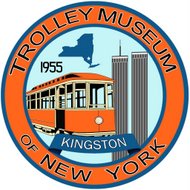
The Trolley Museum of New York, a non-profit organization, is located at 89 East Strand Street, Kingston, New York. The museum is open to the public on a seasonal schedule, but volunteer activities relating to the preservation of historic transit are year-round.

Cincinnati Street Railway (CSR) was the public transit operator in Cincinnati, Ohio, from 1859 to 1952. The company ceased streetcar operations and was renamed Cincinnati Transit Company.

The Fort Smith Trolley Museum is a streetcar and railroad museum in Fort Smith, in the U.S. state of Arkansas, which includes an operating heritage streetcar line. The museum opened in 1985, and operation of its streetcar line began in 1991. Four vehicles in its collection, a streetcar and three steam locomotives, are listed on the National Register of Historic Places (NRHP). The now approximately three-quarters-mile-long (1.2 km) streetcar line also passes four NRHP-listed sites, including the Fort Smith National Historic Site, the Fort Smith National Cemetery, the West Garrison Avenue Historic District and the 1907 Atkinson-Williams Warehouse Building, which now houses the Fort Smith Museum of History.

Streetcars or trolley(car)s were once the chief mode of public transit in hundreds of North American cities and towns. Most of the original urban streetcar systems were either dismantled in the mid-20th century or converted to other modes of operation, such as light rail. Today, only Toronto still operates a streetcar network essentially unchanged in layout and mode of operation.

The Third Avenue Railway System (TARS), founded 1852, was a streetcar system serving the New York City boroughs of Manhattan and the Bronx along with lower Westchester County. For a brief period of time, TARS also operated the Steinway Lines in Long Island City.

The Connecticut Company was the primary electric street railway company in the U.S. state of Connecticut, operating both city and rural trolleys and freight service. It was controlled by the New York, New Haven and Hartford Railroad, which also controlled most steam railroads in the state. After 1936, when one of its major leases was dissolved, it continued operating streetcars and, increasingly, buses in certain Connecticut cities until 1976, when its assets were purchased by the state government.
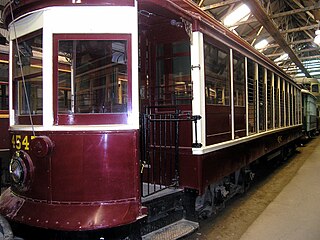
The Brooklyn and Queens Transit Corporation (B&QT) was a subsidiary of the Brooklyn–Manhattan Transit Corporation that operated streetcars in Brooklyn and Queens, New York City, United States. It was created in 1929 to operate these routes, which had previously been operated by the BMT directly; its operations were transferred to the New York City Board of Transportation in 1940, and to the New York City Transit Authority in 1956.

The Jewett Car Company was an early 20th-century American industrial company that manufactured streetcars and interurban cars.
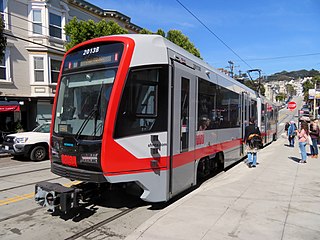
With five different modes of transport the San Francisco Municipal Railway runs one of the most diverse fleets of vehicles in the United States. Roughly 550 diesel-electric hybrid buses, 300 electric trolleybuses, 250 modern light rail vehicles, 50 historic streetcars and 40 cable cars see active duty.

The Edmonton trolley bus system formed part of the public transport network in Edmonton, Alberta, Canada between 1939 and 2009. Operated by Edmonton Transit System (ETS), the system had, at its peak, a fleet of 137 trolley buses, and a total route length of 127 km (79 mi).

The United Electric Railways Company (UER) was the Providence-based operator of the system of interurban streetcars, trolleybuses, and trolley freight in the state of Rhode Island in the early- to mid-twentieth century.

























